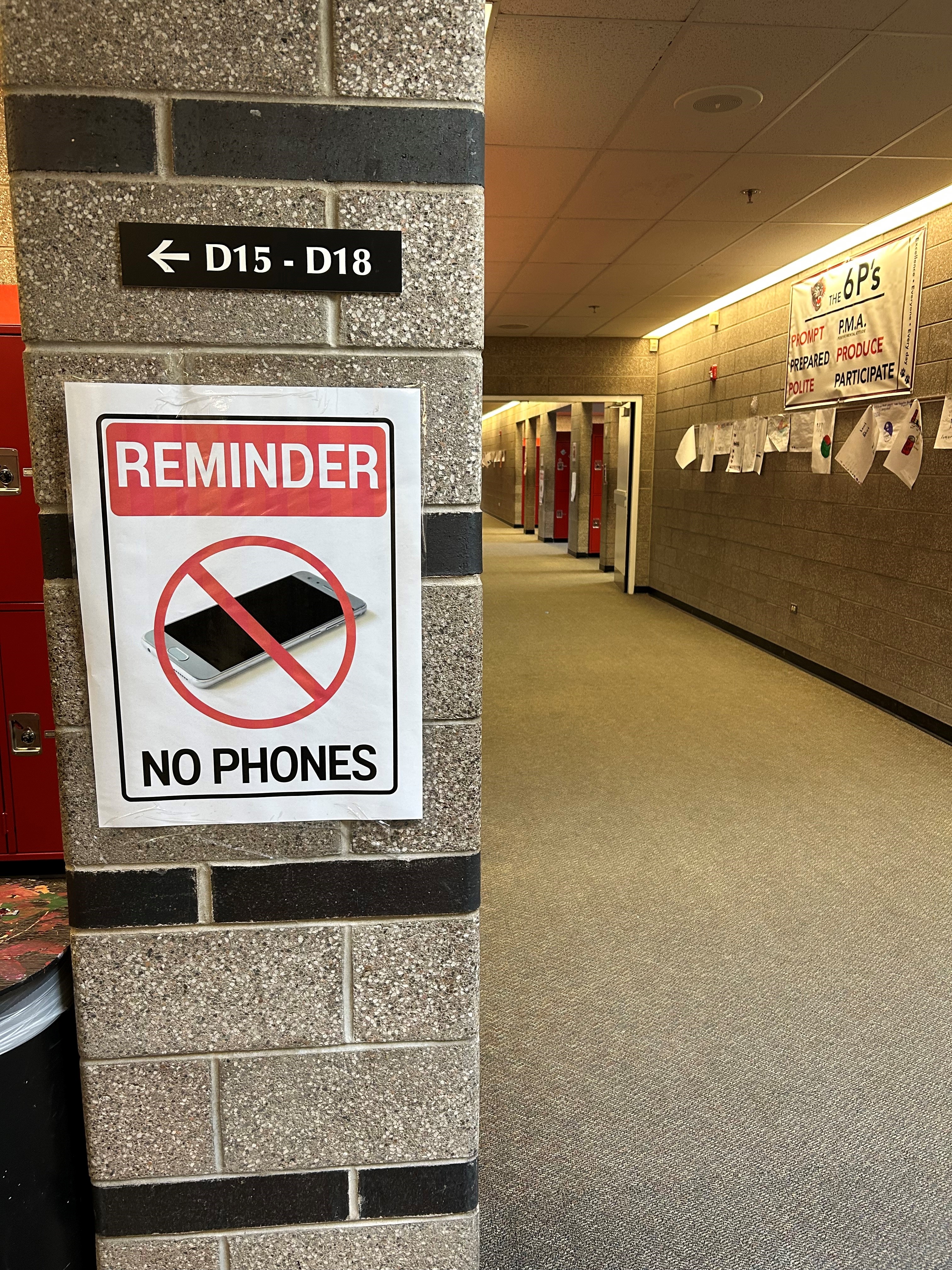Last year, Jack Taylor’s classmates at Preston Middle School used to stand in a circle between classes, heads down, and text each other. This year, with cell phones tucked away from the first bell until dismissal, more conversations are happening face-to-face.
“I feel like kids are more interactive in class and raise their hands more. Last year, they would just stare at their phones,” Taylor said.
Taylor didn’t have a phone until this school year, which he said he never uses, even outside of school. One of his eighth-grade classmates, Lily Pickett, said she was an avid phone user last year, but enforcement of the district’s cell phone policy has helped her cut back on screen time and pay more attention in daily conversations.
“I used to be on my phone 24/7,” Pickett said. “I feel like I’ve become more social with everyone. Communication has gotten a lot better” throughout the school.
Across PSD, all elementary and middle school students are expected to store cell phones, earbuds, and other electronic accessories out of sight and set to silent throughout the school day, including passing periods, lunch, and class. Although the district cell phone policy language hasn’t changed, enforcement of the policy became more uniform in 2024-25. Previously, schools varied in how they implemented the policy – some allowed students to have or use their phones in the classroom or between class periods.
“What was lacking before was consistency,” said Bill  Saint, an assistant principal at Preston.
Saint, an assistant principal at Preston.
It would have been a big deal to take a student’s cell phone away last year and keep it in the office until school let out, according to Saint.
“Since we are all now using the same messaging, it has really been a non-issue,” he said.
As with any new behavior, greater enforcement of the cell phone policy took some getting used to. First offenses can lead to a warning or having to drop a phone off at the office for the rest of the day. If phone use at school is an ongoing issue, school administrators develop a plan with a student’s parents or guardians to determine a solution, which may include leaving a phone at home or keeping it in the office throughout the school day.
The policy has exceptions for students with an Individualized Education Plan (IEP) or a Section 504 Plan that requires use of a device or accessories, such as headphones, and schools can grant permission for a student to use a phone in a designated area in an emergency. Students and families can also connect over a school landline.
Webber Middle School Principal Bryan Davis said he wasn’t sure what to expect this year, but there has been no parental pushback and very little pushback from students to the cell phone policy at his school. Some students still take out their phones from time to time, but Davis said this has become less common throughout the year. His recommendation to schools considering enforcing a bell-to-bell phone-free policy is to drop the fear of the unknown and just do it.
“Classrooms are where I see the biggest difference,” Davis said. “Students’ heads are up, they’re engaged with the teacher, they’re engaged in small group discussion.”
Saint has seen a positive change in his school as well, saying the policy has been empowering for parents and teachers and beneficial for students.
“Our culture is better for it," he said.


